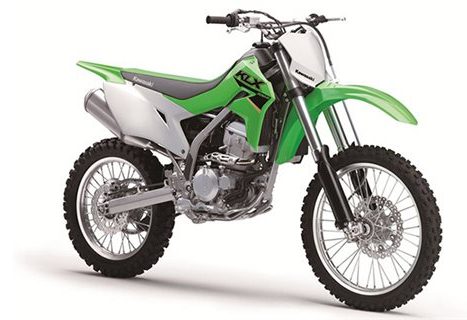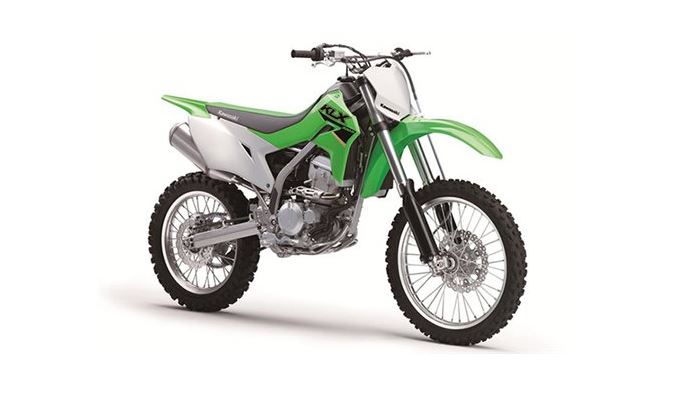2022 Kawasaki KLX300R EMISSION CONTROL INFORMATION

EMISSION CONTROL INFORMATION
To protect the environment in which we all live, Kawasaki has incorporated crankcase emission (1) and exhaust emission (2) control systems in compliance with applicable regulations of the United States Environmental Protection Agency and California Air Resources Board. Additionally, Kawasaki has incorporated an evaporative emission control system (3) in compliance with applicable regulations of the United States Environmental Protection Agency and California Air Resources Board.
- Crankcase Emission Control System
This system eliminates the release of crankcase vapors into the atmosphere. Instead, the vapors are routed through an oil separator to the intake side of the engine. while the engine is operating. the vapors are drawm into the combustion chamber, where they are burned along with the fuel and air supplied by the fuel injection system. - Exhaust Emission Control System
This system reduces the amount of pllutants discharged into the atmosphere by the exhaust of this vehicle. The fuel and ignition systems of this vehicle have been carefully designed and constructed to ensure an efficient engine with low exhaust pollutant levels. - Evaporative Emission Control System
The evaporative emission control system for this vehicle consists of low permeation fuel hoses and a fuel tank. - Evaporative Emission Control System (California Model)
Vapors caused by fuel evaporation in the fuel system are not vented into the atmosphere. Instead, fuel vapors are routed into the running engine to be burned, or stored in a canister when the engine is stopped. Liquid fuel is caught by a vapor separator and returned to the fuel tank.
An add-on or modified part must be compliant with applicable ARB evaporative emission control standards. A violation of this requirement is punishable by civil and/or criminal punishment.
MAINTENANCE
Proper maintenance is necessary to ensure that your vehicle will continue to have low emission levels. This Owner’s Manual contains maintenance operations recommended for your vehicle. Maintenance operations
Warranty
This vehicle is designed, built, and equipped in compliance with applicable regulations of the United States Environmental Protection Agency (EPA) and California Air Resources Board (CARB) at the time of sale. The EPA and CARB requires that your vehicle comply with certain emissions regulation during a potion of its useful life and is free from defects in material and workmanship which could cause the vehicle to fail to conform with applicable regulation. Please read your Kawasaki Limited Emission Control Systems Warranty delivered with this Owners Manual carefully and keep it valid by complying with the owners obligations it contains. 1o ob- tain warranty service, the Kawasaki Limited Emission Control Systems Warranty requires that you returm your vehicle to an authoriZed Kawasaki dealer tor remedy under warranty.
TAMPERING WITH EMISSION CONTROL SYSTEM PROHIBITED
Federal regulations and California State law prohibit the following acts or the causing thereof: (1) the removal or rendering inoperative by any person other than for purposes of maintenance, repair, or replacement, of any device or element of design incorporated into any new vehicle for the purposes of emission control prior to its sale or delivery to the ultimate purchaser or while it is in use, or (2) the use of the vehicle after such device or element of design has been removed or rendered inoperative by any person. Among those acts presumed to constitute tampering are the acts listed below:
Do not tamper with the original emission related parts:
- Throttle body
- Spark plug
- Magneto ignition system
- Air cleaner element
TAMPERING WITH NOISE CONTROL SYSTEM PROHIBITED
Federal law prohibits the following acts or the causing thereof: (1) the removal or rendering inoperative by any person other than tor purposes of maintenance, repair, or replacement, of any device or element of design incorporated into any new vehicle for the purpose of noise control prior to its sale or delivery to the ultimate purchaser or while it is in use, or (2) the use of the vehicle after such device or element of design has been removed or rendered inoperative by any person.
Among those acts presumed to constitute tampering are the acts listed beloW:
- Replacement of the original exhaust system or muffler with a component not in compliance with Federal regulations.
- Removal of the muffler or any internal portion of the muffler.
- Removal of the air box or air box cover.
- Modifications to the muffler or air intake system by cutting, drilling. or other means if such modifications result in increased noise levels.

